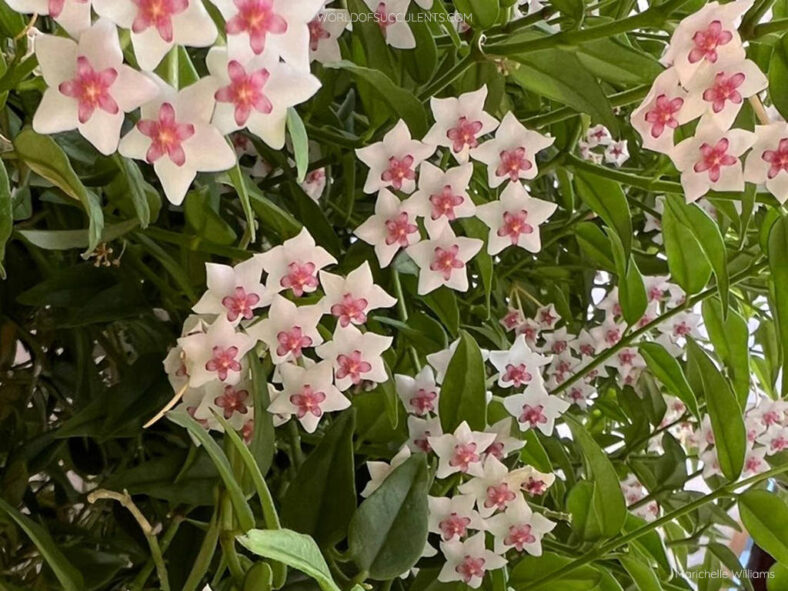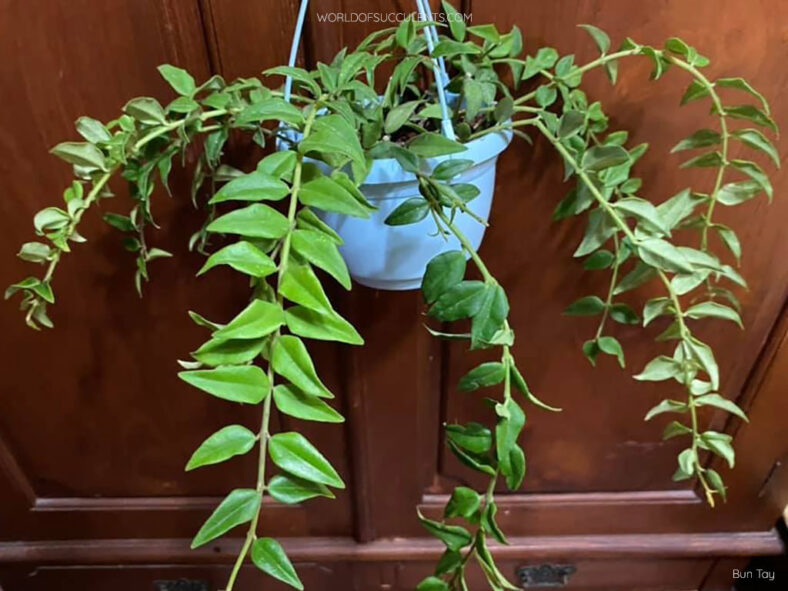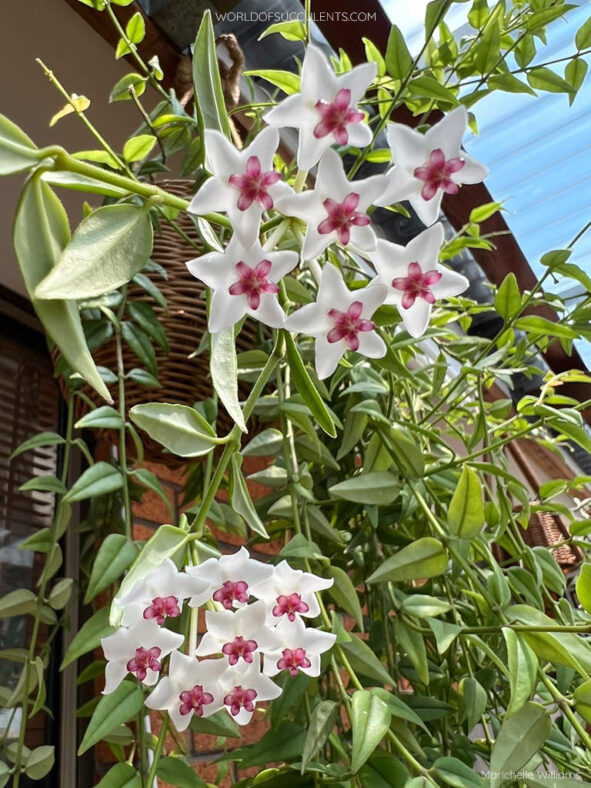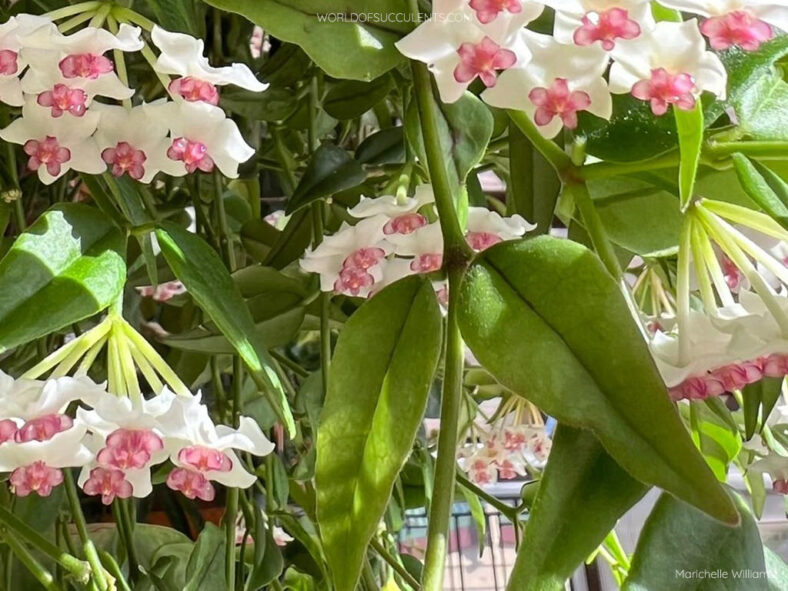Hoya bella was discovered by Thomas Lobb on trees located on a hill near Moulmein, which was then the capital of British Burma (now known as Mawlamyine, the fourth-largest city in Myanmar). This species was first described in Curtis's Botanical Magazine in 1848. In 1993, Hoya bella received the Award of Garden Merit from the UK's Royal Horticultural Society, under the synonym Hoya lanceolata subsp. bella.
Scientific Name
Hoya bella Hook.
Common Name(s)
Beautiful Hoya, Pretty Waxflower
Synonym(s)
Hoya lanceolata subsp. bella, Hoya paxtonii
Scientific Classification
Family: Apocynaceae
Subfamily: Asclepiadoideae
Tribe: Marsdenieae
Genus: Hoya
Etymology
The specific epithet "bella" (pronounced "BEL-luh") means "beautiful, pretty, sheen" and refers to the beauty of this species.
Origin
Hoya bella is native to Manipur in northeast India and Myanmar. It grows as an epiphyte in hill forests.
Description
Hoya bella is a stunning plant with slender, downy, trailing stems that bear green, lance-shaped, slightly succulent leaves.
This species blooms profusely in the summer, producing hanging clusters of star-shaped flowers that emit a strong fragrance, particularly in the evening. The flowers can reach a diameter of 0.7 inches (1.8 cm) and have a white corolla and a lilac-pink corona. Each cluster typically contains seven or eight flowers.

How to Grow and Care for Hoya bella
Light: Keeping this plant indoors in bright, indirect sunlight is best. Although it can tolerate lower light levels, it may become weak and leggy if the light is too low, producing fewer leaves and flowers.
Soil: Well-draining soil that provides excellent aeration and does not hold too much water is most important for growing a healthy plant.
Temperature: Hoya bella thrives in hot and humid climates, so keep it away from drafty windows and doorways during the colder months. It grows best in USDA Plant Hardiness Zones 11a to 11b, with average minimum winter temperatures ranging from 40 to 50 °F (4.4 to 10 °C).
Watering: As this plant is sensitive to overwatering, soak the soil thoroughly during the spring and summer, but allow it to dry out before watering again. Otherwise, you will increase the risk of root rot, and your plant will not be happy. It is relatively dormant during the fall and winter and needs only moderate watering.
Fertilizing: While Hoya bella is not a particularly heavy feeder, it can benefit from high-potassium fertilizer diluted to half strength every two weeks during the growing season.
Repotting: As an epiphyte, this plant has shallow root systems and does need a deep container. It also does not require frequent repotting. In fact, it prefers to be slightly rootbound. Repot the plant in spring only if it has outgrown its container.
Propagation: Although layering is the easiest method of propagation of Hoya bella, using stem cuttings is the most popular. Leaf cuttings can be more challenging, and starting the plant from seeds is the simplest yet most time-consuming method. For best results, take cuttings only when the plant is actively growing, and sow the seeds in spring and summer.
Learn more at How to Grow and Care for Hoya.
Toxicity of Hoya bella
Hoya bella is considered non-toxic and safe around kids and pets.
Links
- Back to genus Hoya
- Succupedia: Browse succulents by Scientific Name, Common Name, Genus, Family, USDA Hardiness Zone, Origin, or cacti by Genus
Photo Gallery
Click on a photo to see a larger version.


